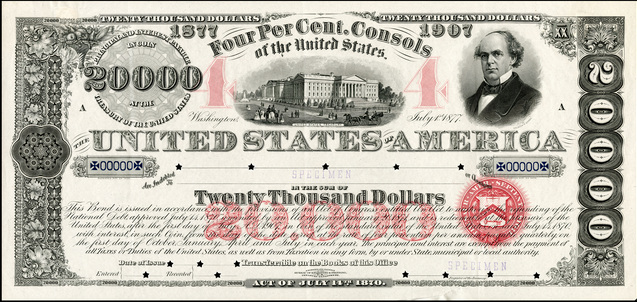
Some principles are timeless. Investors in the US Treasury Securities issued in 1870 (Salmon Chase image on the certificate) were exposed to "Interest Rate Risk", just as investors are today.
In our prior article [ https://www.markettamer.com/blog/u-s-bonds-elephant-in-the-room ] we focused upon concerns voiced at the January ETF.com Conference by financial experts regarding apparent dislocations within the fixed income space. Specifically, they recognize that “experts” have been warning for several years now of an imminent rise in interest rates – therefore cautioning investors to “beware” of overexposure to securities with significant “interest rate risk”. And yet, to nearly everyone’s surprise, interest rates actually continued trending downward.
For example, on April 4, 2010, the CBOE Interest Rate 10 Year Treasury Note Index (TNX) stood at almost 4%. By January 26, 2015, it had descended to 1.68%! Since bond prices move inversely to interest rates, that means that the value of bonds has moved upward… in addition to whatever interest an investor received while holding a given bond!
In addition, sensitivity to interest rate moves dramatically increases as bond maturities become longer (ie. a 30-year Treasury Bond has a great deal more sensitivity to rate moves than a 10-year Treasury Note). As you might therefore imagine, investors who ignored the “experts” during the past several years have been generously rewarded… as you can see in this screen shot from ETF Database (etfdb.com):
If you focus on the “1 Year” performance column, you can see that Vanguard’s Long-term Government Bond Index Fund (VGLT) returned 20.96%…outperforming the 16.89% return of SPDR S&P 500 Index ETF (SPY) during that same period!! iShares 20+ Years Treasury Bond ETF (TLT) did even better (23.86%) … while ETFs employing the use of “STRIPS” and “Zero Coupon” instruments returned around 40%![1]
When one reviews the long list of “experts” who were proven “wrong” on interest rates during 2014 … these names (and her/his projection of the 10-year interest rate by year-end) pop out:
Joseph Davis, Vanguard (2.75-3.75%)
Michael Schumacher, UBS AG (3.5%)
Alex Roever, JP Morgan Chase (3.65%)
Sharmin Mossavar-Rahmani & Brett Nelson, Goldman Sachs (3.0-3.75%)
Bob Doll, Nuveen Investments (3.5%)
François Dupuis & Mathieu D’Anjou, Desjardins (3.6%)
It is worthwhile to note that each of these “experts” still have their jobs, despite being “wrong” in the range of 1.10% to 2.10%!! That observation leads me directly into a brief review of the most highly publicized “wrong” prediction on interest rate trends since 2010: the call by bond legend, Bill Gross, in his February 2011 investor newsletter, that U.S. Treasury Bonds had become overbought… and therefore interest rates were headed upward (and Treasury bond prices headed downward). Amplifying his conviction was the fact that Gross had totally eliminated his fund’s position in U.S. Treasuries – which just two months before had accounted for about 22% of the portfolio!
I know this is impossible, but I ask you to (as much as possible) put out of your mind the thousands of news stories about Gross during 2014 – from the departure of Mohamed El-Erian as CEO and Co-Chief Investment Officer of PIMCO in January through Gross’ departure in September to move to Janus Funds (reportedly because PIMCO was about to fire him).
Whatever Gross did in 2014, at the beginning of 2011, the press esteemed Bill Gross with a veneration very akin to that accorded to Warren Buffett within the world of equities! Gross’ record of decades of outperformance in managing PIMCO’s bond funds put him in a league of his own… a veritable “Bond King”. That is why he had (at one point) the largest bond fund in the world (Pimco Total Return Bond Fund (PTTRX)), which (by March 2012) he managed to clone into a fabulously popular bond ETF (Pimco Total Return Active ETF (BOND)).
However, that one errant rate call in 2011 was a blemish from which Gross never quite recovered! It caused the performance of his funds to significantly underperform competitors during ensuing months, leading to negative publicity and questions regarding whether Gross had “lost it”!
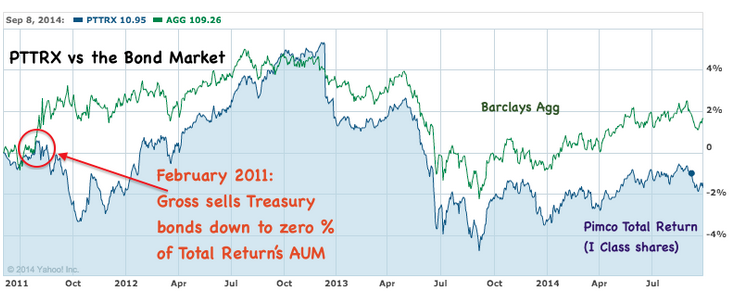
This graph of Pimco Total Return Bond Fund prepared by Joshua Brown (Reformed Broker) appears at http://thereformedbroker.com/2014/09/28/do-we-need-to-fire-pimco/ It shows the fund's underperformance following Gross' big "Rate Call" in early 2011.
How could Gross have been so wrong? That in itself is a tremendous illustration of just how “abnormal” the U.S. bond market has been during the past four years!
I found Dr. J. Bradford DeLong’s[2] blog article on this topic both fascinating and illuminating!
According to DeLong, between December 2010 and February 2011, Gross must have been assuming that the U.S. economy and U.S. Federal Reserve policy would (in short order) conform to the economic and monetary cycles that had become very apparent in recent decades.
For example, since 1948, whenever the unemployment rate moved above “trend” and production and employment moved below “trend”, all three of those variables would move at least 2/3 of the way back toward their respective “trend” value within just two years!
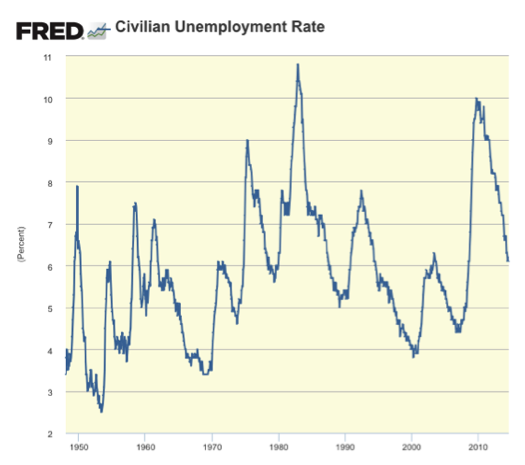
Gross expected U.S. unemployment to significantly decrease by the end of 2011... assuming that the "normal employment cycle" would have kicked in by then.
Since Gross is a believer in the self-regulating forces (moving toward equilibrium) inherent within the U.S. private sector, he undoubtedly expected employment and production to regain a great deal of its lost momentum during 2011. Unfortunately for Gross, by the end of 2011 (two years following the business cycle bottom of October 2009) those economic measures had only recovered 3/10 (instead of 2/3) of what it had lost in the Financial Crisis!
Regarding interest rates themselves, since the year 2000, U.S. Treasury 10-year Notes had been trading in a range between 5.0% and 2.25%. Then following 2008 (into 2011), that range narrowed to 2.25% – 4.00%. Therefore, as the economy (employment and production) regained steam, it would seem to be inevitable that rates would climb back up toward the more “normal” recent range of 4-5% (or so Gross thought).
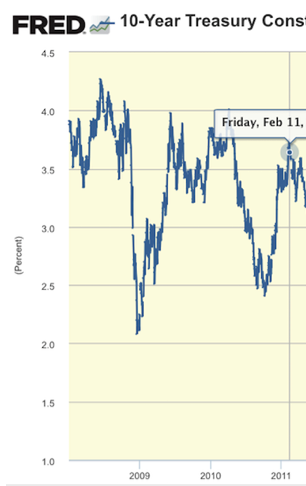
This graph from the St. Louis FED illustrates the "range" of rates that had been in effect prior to 2011.
Gross had observed earlier that the only force that was restraining Treasury rates from already having moved higher than they were was – the U.S. Federal Reserve! In effect, the “Quantitative Easing II” program had been artificially reducing the “supply” of 10-year Treasury Notes… therefore[3] raising prices and lowering rates. Gross did not anticipate “QE III”.
Finally, Gross did not full appreciate how traumatized millions of investors had become by the devastation to their portfolios wrought by the calamitous fall of equity prices between 2008-2009. That experience significantly altered the relative risk tolerance of investors… and their lower risk tolerance increased their appetite for bonds (increasing demand for bonds) and therefore helped keep rates lower than they otherwise would be.
DeLong introduced me to the term “Dornbusch Rule” – an investment reality about which I have known in principle for years. However, I was unaware that it had a name! The Dornbusch Rule is (to paraphrase:
One’s assessment of economic and investment fundamentals can be accurate, and one can have strong confidence in that assessment. However, the above notwithstanding, the Market is in no way required to respond in accordance with your assessment – no matter how sterling it might be! In fact, the Market can act contrary to that assessment for a lot longer than one’s investment capital can hold out!!
One could opine that Gross’ biggest mistake was forgetting the Dornbusch Rule! His reputation and his investors suffered as a result.
The fact that Gross’ market opinion directly impacted investors is crucial here… and not only a few thousand, but legions of investors (at its peak in early 2013, almost $300 billion was invested in PTTRX). That raised the stakes regarding Gross’ interest rate prediction considerably.
DeLong points out that a long line of politicians made public comments in 2011 regarding the certainty of rates rising – including Senator Alan Simpson and Erskine Bowles (former White House Chief of Staff), who co-chaired the President’s “Deficit Commission”. Interestingly, they were never held accountable for their totally incorrect “call” on rates, while Gross was skewered for his. The reason for this apparent inequity is simply this: Gross was acting on behalf of “investors”, while Simpson and Bowles didn’t manage any investor funds.
As the wife of a veteran hedge fund official once trenchantly observed:
your theory of the world is that the market is inefficient when you put a trade on but will rapidly become efficient thereafter–where “rapidly” means “before your clients lose their patience with you”!!
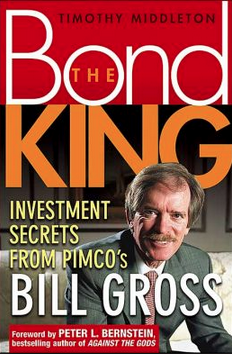
Perhaps one of the reasons that Bill Gross so flamboyantly pronounced his 2011 "Interest Rate Call" was because he believed what the press said about him -- he was the "Bond King".
Of course, Gross’ own hubris accentuated the intensity of the criticism he received. Somewhere along the line he began believing the press’ characterization of him as a bond genius…. because Gross’ prediction regarding rates was expressed in a fashion absolutely certain to draw outsized attention. Here are some of his quotes:
1) Gross called Treasury bonds a “robbery” of investors (because of the ultra-low interest rates exposing investors to significant risk from inflation);
2) He talked about the need for investors to “exorcise” US bonds from their portfolios… obviously suggesting that US bonds were somehow evil;
3) He described Treasury bond investors as “frogs being cooked alive in a pot.”
It is true that Treasury Securities are considered to be the most vulnerable to interest rate risk (ie. the first to feel “the heat” when rates begin to rise)… but in retrospect, it is obvious that Gross would have benefitted (considerably) from couching his rate call in much less dramatic fashion!!
There is another “fixed income event” that surfaced within one year of Gross’ errant rate call. That “event” illustrates a principle that provides an illuminating answer regarding why bonds have been acting “abnormally” in recent years!
If I refer to “CDX IG 9”, most of you would respond: “Huh?! What’s that?”
CDX IG 9 is a credit default swap index based upon the default risk of major U.S. corporations. In my opinion, that type of instrument is more akin to a Las Vegas style “prop bet” than it is a legitimate “investment”[4]. However, major institutional trading desks engage in transactions that involve similar trading instruments everyday. To oversimplify, if one believes that the U.S. economy is strengthening and (therefore) the credit risk inherent in major U.S. corporations is decreasing (ie. they are becoming stronger financially), one would short that index.
In February of 2012, some traders recognized that CDX IG 9 was priced lower than one would expect based upon calculations of what was then its “fair value”. A growing number of traders began (therefore) to “buy the index and sell its component short” – a strategy that, under normal circumstances, would result in a profit as the index began reverting to its inherent “fair value”!
However, March passed by and April came without CDX IG 9 reverting to “fair value”. In fact, it moved further away from where it “should” be!! Needless to say, the supervisors of those traders began to grow impatient and ask: “How much longer do we have to carry this trade before it profits… Are you sure you are correct?”
Not surprisingly, those traders started to delve deeply into all the information (and sources) they could find regarding why this “slam dunk” trade was failing! Among the facts they sought out was: “Who is on the other side of this trade?”
Can you guess who the counterparty on that CDX IG 9 trade actually was?
His name was Bruno Iksil.
That doesn’t help you? Sorry.
How about if I tell you that Bruno was the infamous “London Whale” of JPM Morgan Chase (JPM)!!
Yes, Bruno was (essentially) the sole counterparty on that trade. And because he had the resources of Chase behind him, he was able to repeatedly support his position.
What is the implication of all this (and resulting insight)? If the counterparty to a particular transaction has enough resources, that counterparty can wait out such a trade because, eventually, they will recover their capital and a bundle of profits (assuming the U.S. economy did not suffer a “Black Swan” event like it did during the 2007-09 Crisis). That is what Iksil pressed Chase to do. He “knew” his trade would eventually succeed!
However, in the interim, Chase had to account for an ongoing unrealized loss until the remaining time left on the trade expired! And since Chase is a public company, and more specifically, a major bank, it could not risk ever letting its net worth move below zero (not even for a moment). Therefore, Iksil’s boss got the word from CEO Jamie Dimon to unwind the trade and take the loss – which turned out to be approximately $6 billion. That loss caused great embarrassment to Dimon and to the bank… and so outraged investors (and the board) that Dimon almost lost his job and had to take a huge pay cut.
So what does the London Whale have to do with U.S. interest rates? The key concept here is directly tied to the term “Counterparty”! Remember that I pointed out that if Iksil had had unlimited leeway, he could (would) have made Chase a bundle of profits from the CDX IG 9 trade? Iksil’s “Achilles heel” was that he was part of a publically traded bank that could not tolerate reporting huge unrealized losses!
Now can you see where this argument is heading?
Countless financial experts and Wall Street fund managers (including Gross) have understood Ben Bernanke’s actions between 2008 and his retirement as Chairman of the Federal Reserve to be parallel to the actions of Bruno Iksil. Specifically:
1) Bernanke used QE I, QE II, and QE III to balloon the balance sheet of the Federal Reserve by a factor of four;
2) He used that massive supply of funds to enable the U.S. Federal Reserve to become the largest owner of U.S. Treasury Securities (and therefore the biggest “Counterparty” in that space);
3) The result has been that interest rates have been pushed lower, and Treasury and MBS bond prices pushed higher… than “fundamentals” alone would justify!!
The mistake made by Gross (and others) was in assuming that the Federal Reserve would (by some necessity) soon revert to “normal” monetary policy and unwind its massively leveraged bond position – leading (according to economic law) to significant increases in bond rates and declines in bond prices!
However, unlike PIMCO (Gross) and Chase – the Federal Reserve has no (real) investors. The Federal Reserve is not obligated to “maximize shareholder value”. More importantly, the Federal Reserve is free to create as much “money” as it deems advisable at any given moment. And the Federal Reserve can therefore “out wait… out wit… out maneuver… out last” all other entities within the market!! The Federal Reserve is the ultimate “Counterparty”… able to accomplish what Iksil couldn’t, what Gross couldn’t, and what we can’t.
As we are regularly reminded by our Market Tamer coaches – “Don’t fight the FED!”
INVESTOR TAKEAWAY:
As we all know from the financial press, the general “expectation” is that rates will at least begin rising by mid-year. If we can take that expectation at face value, what investment choices do we have in order to manage our “interest rate risk”?
The answer to that question can be as long and as varied as the analyst or commentator providing the answer. Let me start by helping you consider the “short end” of bond maturities.
Excluding promotional offers from banks (ie. with rates that discontinue after the initial term), here is what Edward D. Jones & Company lists on their website for available Money Market Rates:[5]
and for a FDIC-insured bank deposit:
Can we do better than that? Yes.
There is a group of funds and ETFs that can be characterized as similar to (but not identical to) money market funds.[6]
The three biggest ETFs in this category are:
Here is a summary of the duration and SEC Yield of these ETFs that I compiled today from the respective websites:
Obviously, there is a clear distinction in the nature of these three ETFs:
1) MINT invests in a broad range of fixed income securities and has an effective duration of approximately 1/3 of a year.
2) SHV and BIL each limit themselves to US Treasury Securities, but BIL has a much shorter duration;
3) Because of the above, MINT has a much higher yield than the other two.
It will be well worth your time to access the streaming interview of MINT fund manager, Jerome Schneider[7]. Note that while many ETFs are based on a passive index, Schneider’s funds are actively managed:
http://www.etftrends.com/community/video/ (when you get to the video archive page, look down two rows and find the February 5th interview with Schneider).
Which ETF you prefer (if any of these three) will depend upon your particular market view and risk tolerance. But there is no denying that they offer a yield significantly higher than that of money market funds themselves!
Before I wrap up, allow me to pose one elementary question. And I preface my question by acknowledging that I do not have an economics PhD, nor do I pretend to be an “authority”. But I wonder:
1) If the Federal Reserve begins to push rates higher in June (or later), won’t that serve to push the U.S. Dollar higher?
2) Won’t that negatively impact U.S. exports?
3) Won’t that also place more pressure on the Euro, the Yen, the Ruble, and particularly emerging market currencies?
4) Besides fostering an even greater incentive for global funds to pour into U.S. bonds and stocks, won’t that also impede global economic recovery?
5) And this may be the most intriguing question of all:
Does the U.S. government really want rates to increase?
a) The U.S. Government Accounting Office reported that even though the national debt rose in FY2012, the interest rate paid declined…
b) That served to decrease the current cost to government of increased borrowing.
c) Obviously, when/if interest rates revert to historical averages, the government’s interest cost will increase significantly.
d) Review and digest these graphs from the U.S. Congressional Budget Office:
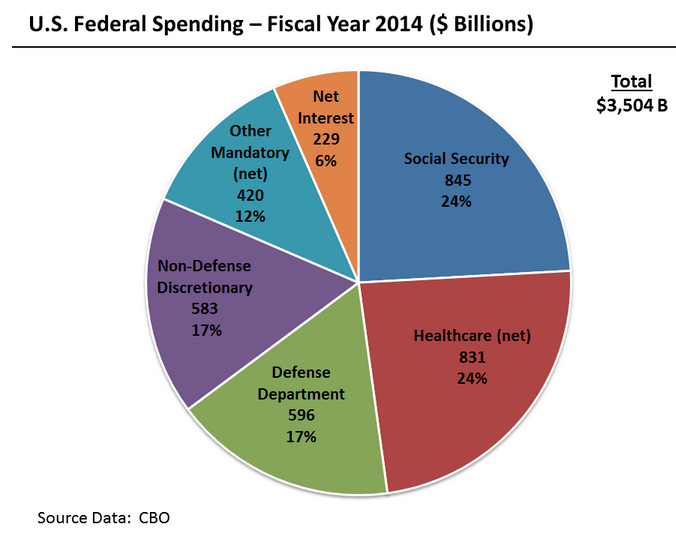
This is a CBO split out of the 2014 Federal Budget... reflecting the percentage of the Budget allocated to each Budget Category. "Net Interest" consumes about 6% of the Budget.
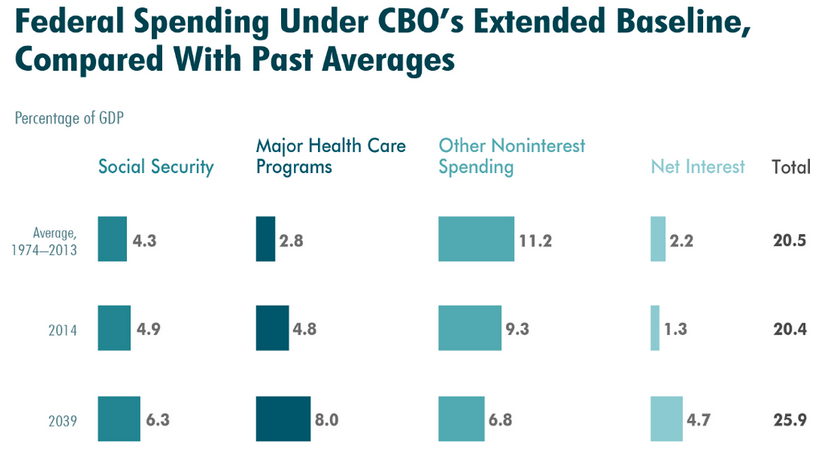
Obviously, the CBO is using a different "Baseline" in this graph. However, notice that the current "Net Interest" is about half of the prior 40 year average! Note that the projection of the portion of Budget Revenue that will be consumed by debt servicing is over three times greater than in 2014!
Since Washington D.C. has been demonstrating for a number of years its inability to actually prepare, agree upon, and pass an annual budget… much less one that is “balanced”… how will Washington cope with a steadily rising expense for the yearly interest payments due on Federal Debt?
Keep your eye out for the next article… when we will briefly highlight one of the greatest (new) risks facing bond buyers today (no, it isn’t from “big banks”). And we will review some new investment concepts in managing interest rate risk!
DISCLOSURE: The author does own shares of one Pimco ETF (HYS) and has owned (in the past) MINT, PTTRX, and BOND. He does not own JPM, but has in the past. Nothing in this article is intended as a recommendation to buy or sell anything. Always consult with your financial advisor regarding changes in your portfolio – either subtractions or additions.
FOOTNOTES:
[1] INVESTOR WARNING: “STRIPS” and “Zero Coupon” bond instruments should be considered “speculative” investment options within the bond space. They are not for the inexperienced or the faint of heart! Just as they offered a phenomenal return during 2014… they could drag you and your portfolio down when interest rates begin to rise!
[2] J. Bradford DeLong is professor of Economics and chair of the Political Economy major at the University of California, Berkeley.
[3] Remember the laws of economics – reduced supply (given steady demand) results in higher prices… ie. lower yields on Treasuries.
[4] The fact is that CDX IG 9 has been described as a “derivative of a derivative”… confirming that it is arcane (or “sophisticated”… take your pick).
[6] The main distinctions between “money market funds” and these “similar” funds include: the funds I am reviewing do not maintain a constant price of $1/share; the effective duration of each fund in the category must be reviewed, since some are notably longer than others.
[7] Schneider also manages PIMCO Low Duration Exchange-Traded Fund (LDUR) and is a “Managing Director” at PIMCO.
Related Posts
Also on Market Tamer…
Follow Us on Facebook

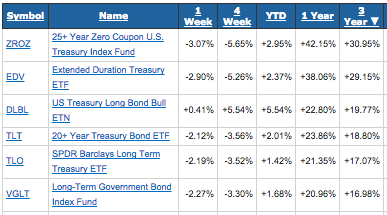
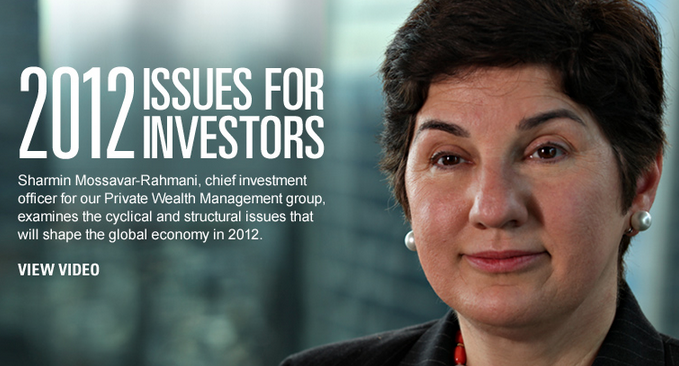
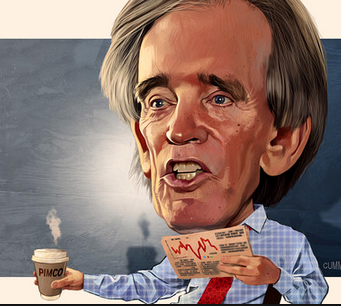
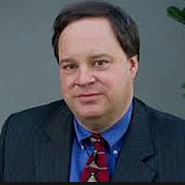
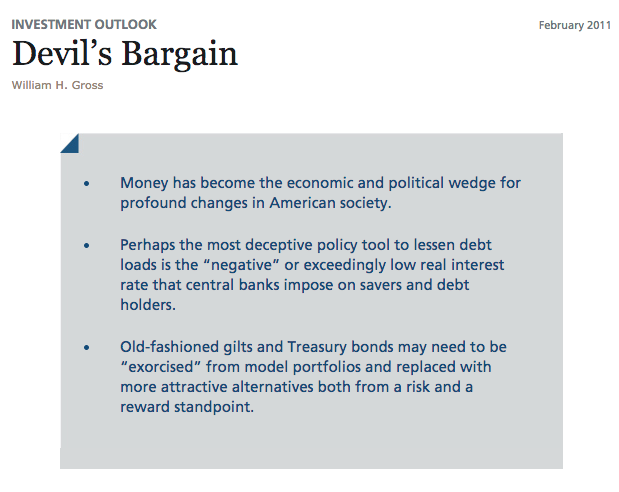
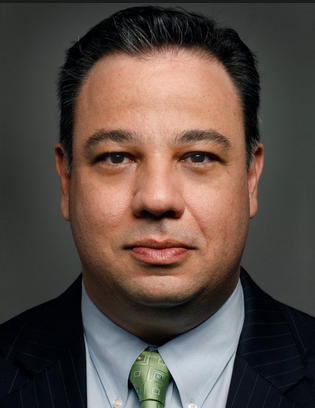


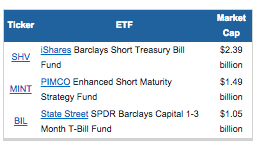

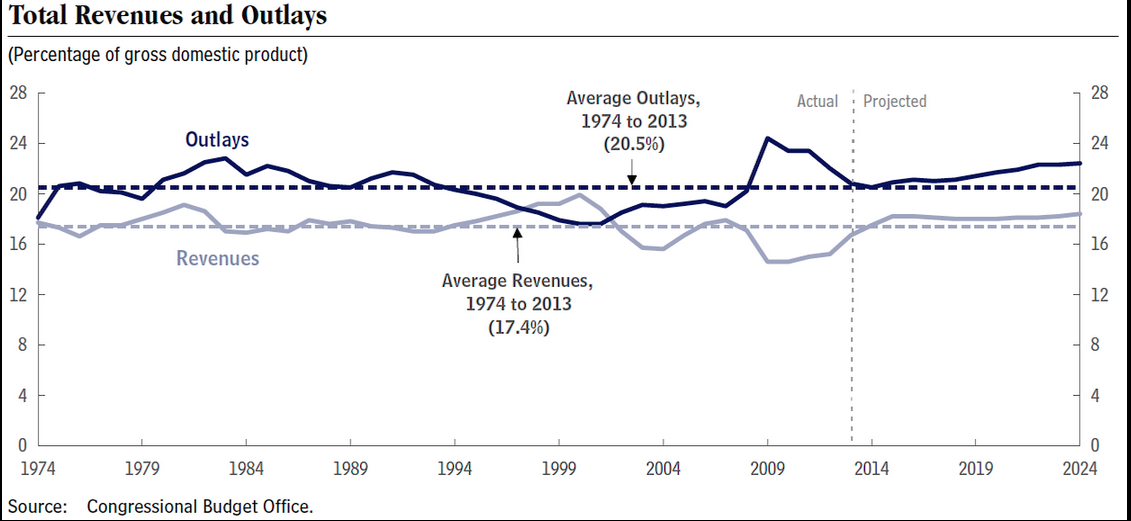
 Why Investors Were Upbeat About Chevron Stock on Tuesday
Why Investors Were Upbeat About Chevron Stock on Tuesday

